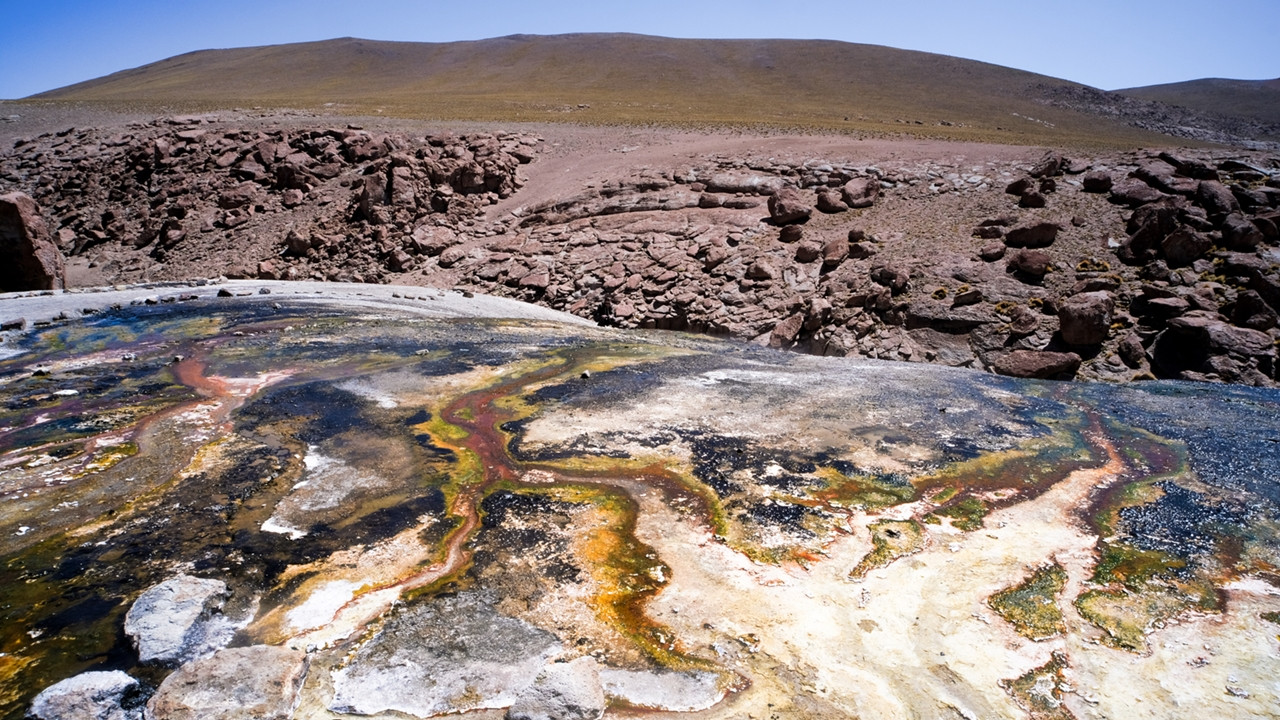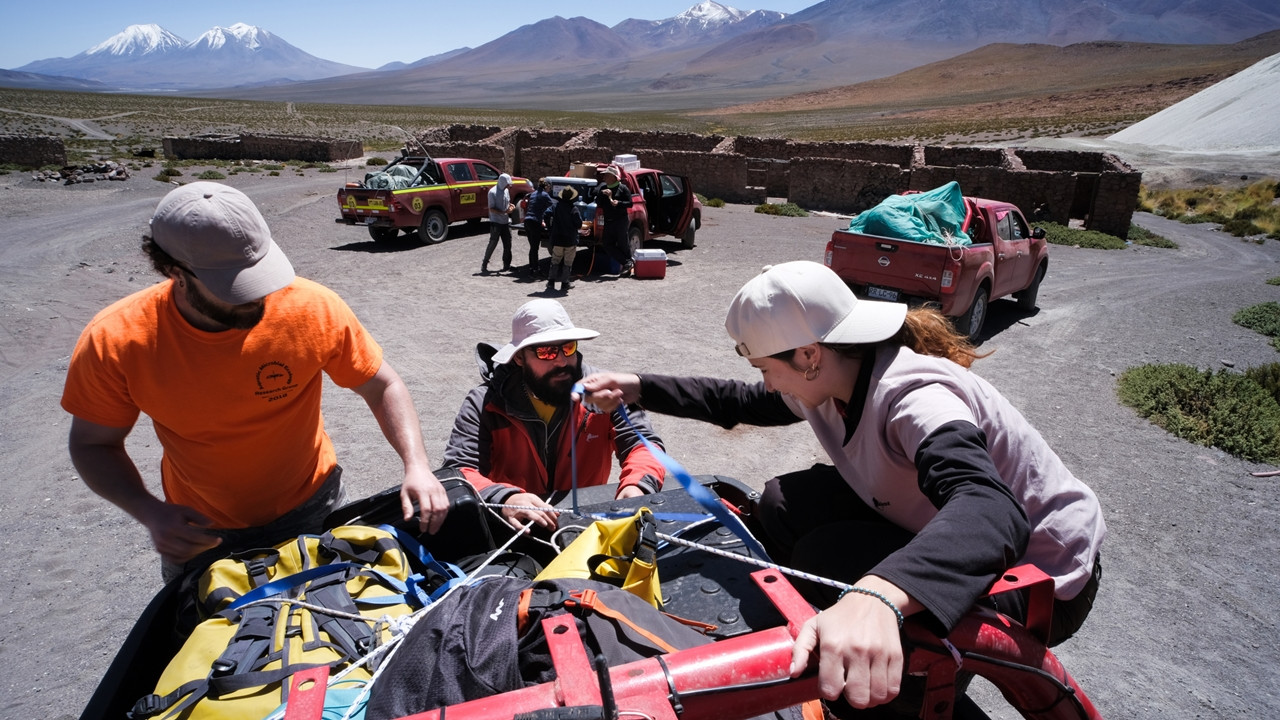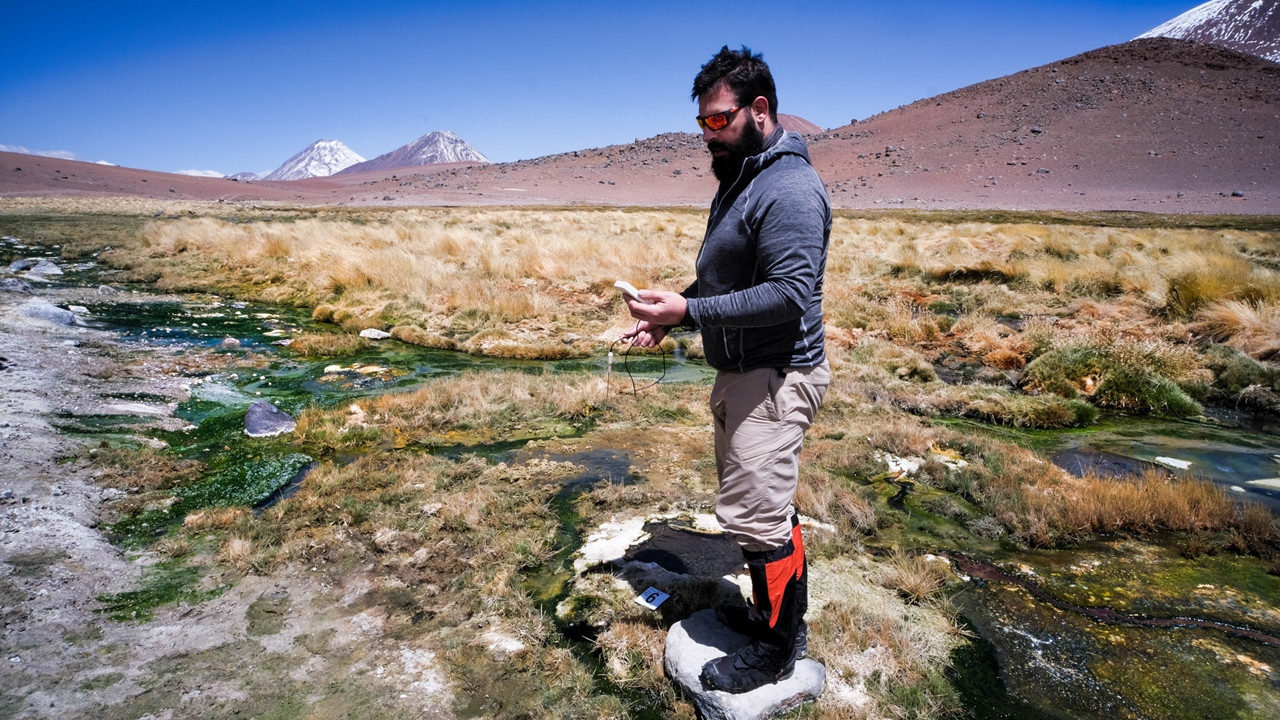1 min to read
Atacama springs - high and hot
Doing research at high altitude

At 4750 meters altitude, a simple task, like calibrating a ph-meter (a device measuring the acidity or alkalinity of a fluid) requires care. Donato Giovannelli, microbiologist and leader of CoEvolve attempts to calibrate the tool, precariously balancing on moving stones in a muddy hot water-fed swamp at Alitar Verte, Northern Chile, not far from the ALMA telescope.
At this altitude the winds and the UV are strong. Oxygen available for breathing is almost half as at sea level, this desaturation of oxygen is what leads people to experience Acute Mountain Sickness, a dangerous condition that the scientists participating to the expedition in northern Chile this year tried to avoid with behavioral precautions, such as recommendations to move very slowly and avoid overstraining.

The area is covered by plants and it is a crucial spot for birds and all high altitude wildlife, such as viguñas and guanacos. Apart from these rare oasis the region is a barren, volcanic desert in the Andes, stretching from Chile to Bolivia and Peru.These colorful wetlands are rich of life, part of which come from the deep, an underworld rich of life thriving on chemicals from the rocks and heat from the subducting slab of oceanic crust that, from the Pacific Ocean, dips under the South American plate.
Donato Giovannelli and his team measured chemical and physical parameters at the source, collected samples of water and soil, with the aim of understanding the subsurface microbial life.
The expedition was part of a project to study the role of subsurface microbes in subduction zones, funded through the National Science Foundation FRES program (USA), in collaboration with researchers supported by CONICYT (Chile) and the European Research Council ERC CoEvolve project.
Fotos: Jacopo Pasotti, 2022
Investigating the microbial communities and geochemical parameters on a large geographical scale along a subduction zone, helps us understand the invisible and otherwise inscrutable subsurface ecosystem, how it is influenced by tectonic processes and how microbes interact with this still little known environment.

